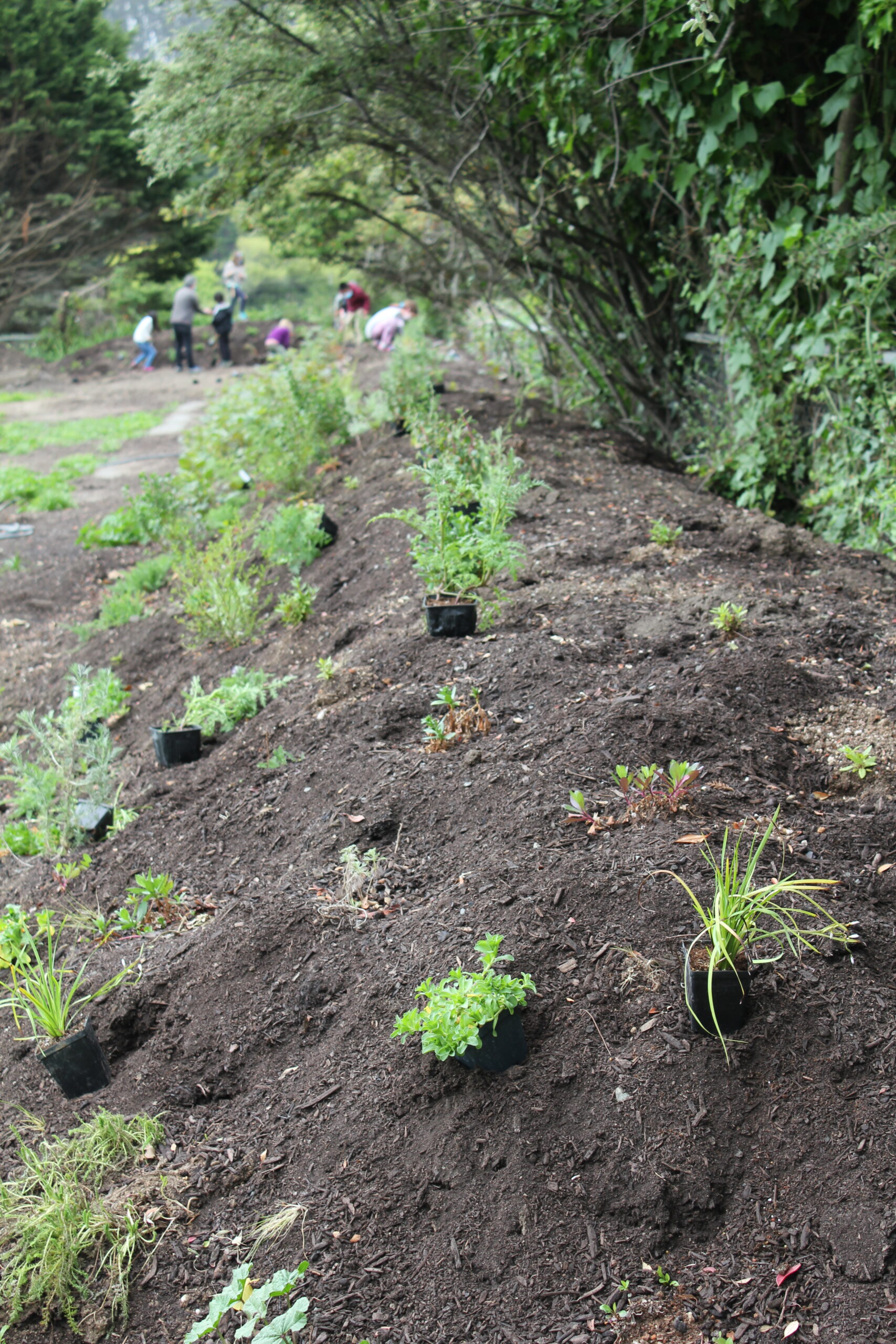Each winter, small populations of monarch butterflies overwinter in Bolinas, California. With only 1,194 monarchs recorded overwintering on the coast this past winter, the number of Western Monarch butterflies overwintering on the California coast has fallen to a record low. To contribute to the efforts that are being made to protect the monarchs, SPAWN is working to build habitat gardens for monarchs at schools in Marin County, California through our “Bringing Nature to School” program. During the 2019-20 school year, SPAWN worked with the 4th grade classes at Glenwood Elementary to create a monarch waystation at the school in San Rafael. The garden was well-received by migrating monarchs this past fall, as they stopped to sip nectar and lay eggs before heading towards the coast.
This year, Anna Tosick, a 3rd grade teacher at the Bolinas-Stinson School, connected with SPAWN to help create a monarch waystation at their school. SPAWN partnered with the school to build a garden filled with fall, winter, and spring blooming nectar plants which provide food for the monarchs as they overwinter nearby on the coast.
The Bolinas-Stinson School recently created a set of “outdoor classrooms”—concrete pads located outside of each building where classes can be held outdoors when weather is good. The soil removed for the creation of the outdoor classrooms was piled into a large mound along the back side of the athletic field. The garden is 52 yards long and five yards wide, approximately 2,300 square feet in size. Because the area is so large, the garden is being planted in stages. This spring, Nursery Manager Audrey Fusco joined the 3rd grade class for three class sessions, and the students learned how to build habitat for wildlife by planting native plants that provide nectar to monarchs.
The students planted the framework of the garden this spring. The process started with planting shrubs, including California lilac (Ceanothus thyrsiflorus), coyote brush (Baccharis pilularis), goldenbush (Ericameria eridoides), and coffeeberry (Frangula californica). During the second session of planting the students added perennial flowering plants, including seaside daisy (Erigeron glaucus), California aster (Symphyotrichum chilense), and yarrow (Achillea millefolium). Finally, the students added grasses including tufted hairgrass (Deschampsia cespitosa) and purple needlegrass (Stipa pulchra), as well as vines such as hairy honeysuckle (Lonicera hispidula), which are helpful to butterflies, since grasses and other groundcovers provide protection from sun, wind, and predators.
The foundation for the monarch nectar garden was established thanks to the planting sessions held this spring, and SPAWN will continue to work with students at the school to fill in the details of the garden over the next few years. In total, 18 species were planted in the garden this year. A total of 270 plants were donated by SPAWN and our partner organizations, CNPS Marin and Home Ground Habitats, with a total value of approximately $1,700. We look forward to watching this garden grow with the students at the Bolinas-Stinson School and hope to see overwintering monarch populations recover in Bolinas over the coming years.




